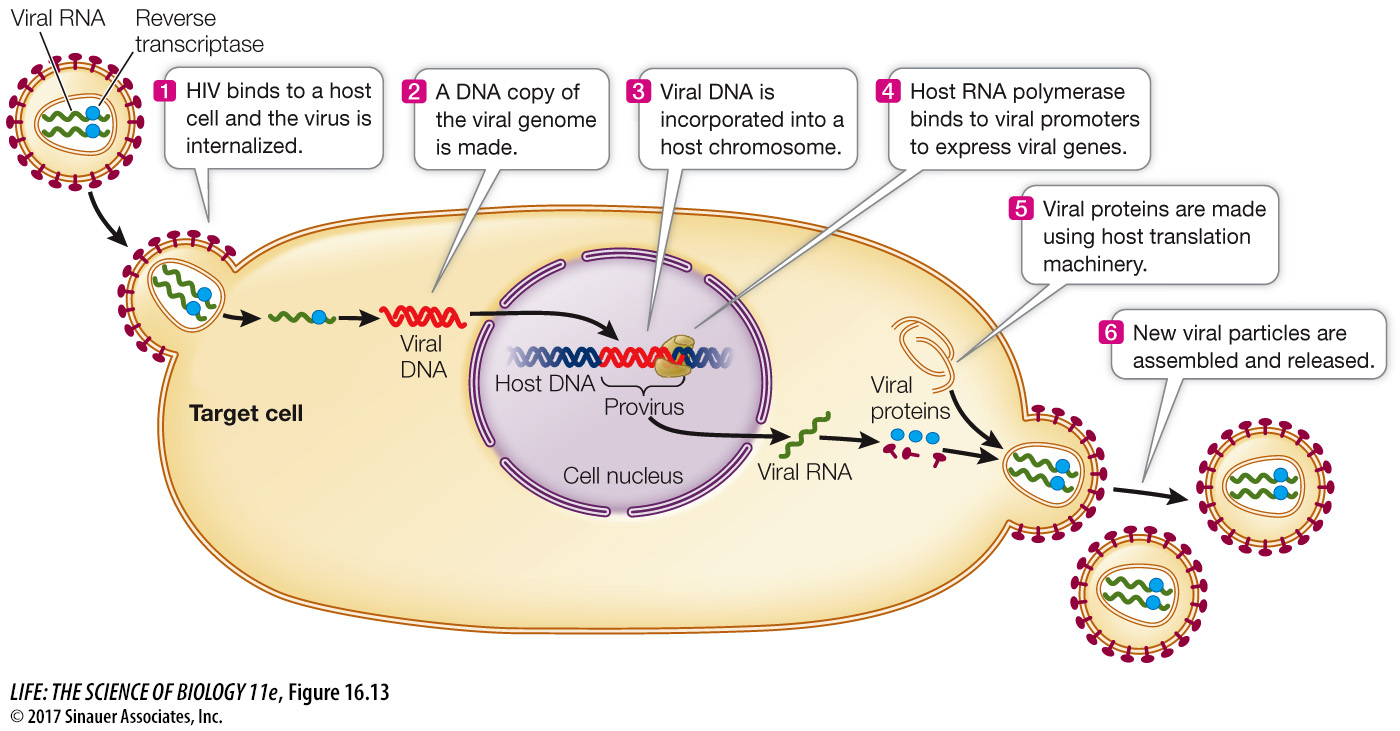HIV gene regulation occurs at the level of transcription elongation
As we have discussed so far, many instances of gene regulation occur at the level of transcription initiation, involving both activator and repressor proteins that bind to the promoters of genes. However, studies of *HIV and other viruses have revealed that transcription can also be controlled at the elongation stage.
348
*connect the concepts Learn about HIV and its effects on the immune system in Key Concept 41.6.
HIV is an enveloped virus; it is enclosed within a phospholipid membrane derived from its host cells (a specific type of immune system cell) (Figure 16.13). During infection, proteins in this membrane interact with proteins on the host cell surface, and the viral envelope fuses with the host cell membrane. After the virus enters the cell, its capsid is broken down. The viral reverse transcriptase then uses the virus’s RNA template to produce a complementary DNA (cDNA) strand, while at the same time degrading the viral RNA. The enzyme then makes a complementary copy of the cDNA, and the resulting double-

Question
Q: Looking at Figures 16.12 and 16.13, can you classify HIV as a lytic or lysogenic virus?
Lysogeny is a term used for bacteriophage to describe the integration of the viral genome into the host cell for a period of time. Although the term is not used for eukaryotic viruses, HIV does integrate its genome as cDNA and so could be called lysogenic.
The HIV provirus resides permanently in the host chromosome, and can remain in a latent (inactive) state for many years. During this time transcription of the viral DNA is initiated, but host cell proteins prevent the RNA from elongating, and transcription is terminated prematurely. Under some circumstances, such as when the host immune cell is activated, the level of transcription initiation increases and some viral RNA is made. One of these viral genes encodes a protein called tat (transactivator of transcription), which binds to a stem-
Almost every step in the reproductive cycle of HIV is, in principle, a potential target for drugs to treat AIDS. The classes of anti-
reverse transcriptase inhibitors that block viral DNA synthesis from RNA (at step 2 in Figure 16.13);
integrase inhibitors that block the incorporation of viral DNA into the host chromosome (at step 3); and
protease inhibitors that block the posttranslational processing of viral proteins (at step 5).
Combinations of drugs from these classes have been spectacularly successful in treating HIV infection.